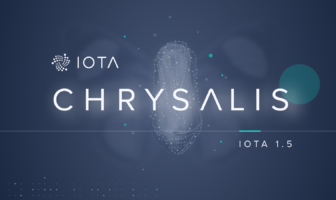What is EOS?
EOS is a blockchain-based technology that pursues similar goals to Ethereum. Both projects are aimed at providing decentralized open source software with which high-performance, decentralized applications and smart contracts can be developed.
Both projects can therefore also be regarded as direct competitors. EOS is also referred to by some as the ‘Ethereum Killer’ because EOS is able (as of November 2018) to process a larger number of transactions per second than Ethereum. In addition, EOS does not charge any fees for transactions, while Ethereum uses the gas model.
The EOS ecosystem consists of two main components, EOS.IO and the EOS token. EOS.IO is the software of the EOS ecosystem that can be compared to the operating system of a computer and provides the basic functionalities for the creation of decentralized applications as well as the management and control of the EOS blockchain. The architecture is designed to enable vertical and horizontal scaling of distributed applications (dApps). The EOS network is therefore hosted on servers or computer centres of the block producers. The resulting technology is a blockchain architecture that, according to EOS whitepaper, should scale to 10,000 transactions per second.
Delegated Proof-of-Stake (DPoS)
Despite similar objectives, EOS and Ethereum differ significantly in their technology. The biggest difference is the consensus algorithm. While Ethereum is currently still using a proof-of-work (and will use a proof-of-stake in the future), EOS uses a delegated proof-of-stake (DPoS) algorithm. According to this algorithm, those who own EOS tokens can determine block producers (BPs) via a voting system. A total of 21 block producers must be selected.
The BPs have the task of validating the transactions on the EOS blockchain and writing the transactions to the blockchain. Anyone can apply for this task. The only requirement is a suitable hardware system. From a financial point of view, working as a block producer is very lucrative, since the reward is paid out in newly generated EOS.
The block time of EOS is exactly 0.5 seconds. This means that every 0.5 seconds exactly one block producer is entitled to produce a block. The EOS protocol stipulates that the blocks are produced in rounds of 126 (6 blocks each at 21 producers). At the beginning of each round, the 21 block producers with the most votes are selected to create the blocks and receive the reward in the next round.
Another special feature of EOS compared to Ethereum is that by reaching a consensus among the 21 block producers, serious errors can be corrected by a ‘Supermajority’ consensus, without a hard fork, by rolling back and resetting to the previous database.
The EOS Coin
The EOS coin is the crypto currency of the EOS network. The EOS Coin not only serves as a means of payment, but also provides developers with the server resources they need to develop and operate dApps.
You can find the current EOS price on our EOS price overview.
Bandwidth, CPU and RAM trading
While the exchange rate is fixed for the two resources, bandwidth and CPU, there is a market-oriented model for RAM at EOS. Both the bandwidth and the CPU are output proportional to the amount of EOS. Whenever the two resources are not needed, they can therefore be released without the risk of a fluctuating exchange rate in relation to EOS.
The allocation of the RAM differs considerably here. RAM can be traded. There is therefore an exchange rate risk between RAM and EOS. When the EOS Mainnet was launched in June 2018, there was already a real bubble of speculation about RAM in the EOS network. Instead of actually using the RAM, many speculated that RAM would only be needed once, driving up prices.
For developers and their applications, however, memory is an extremely important component because a distributed application that has not been allocated enough RAM may not be able to perform certain operations (e.g. a smart contract). Since each individual data set must be replicated in the RAM of each node, the storage of data in RAM should be expensive.
EOS History and Development
The founder of the project is Dan Larimer, who was already active in the crypto world before EOS. With the two projects BitShares and Steemit he co-founded two very well-known crypto currencies, but left them prematurely, which is why he was criticized several times. Steemit is still a very popular social media platform today, with more than half a million user accounts and where users are paid to create and maintain content in Steem.
The Initial Coin Offering (ICO) from EOS was unique. The ICO was held for a full year and ended in June 2018. Until then, EOS was based on Ethereum and was an ERC20 token. It was only with the launch of the Mainnet in June 2018 that there was an EOS Coin. The EOS ICO was one of the largest of its time, when the project raised 4 billion dollars, remarkably in Ethereum. There are numerous speculations as to whether EOS, as an ETH whale, was not responsible for the strong price losses of ether in 2018 due to the sale of large quantities of the collected ether.
Subscribe to our daily newsletter!
No spam, no lies, only insights. You can unsubscribe at any time.
Bottom line: Is EOS worth an investment?
EOS is one of the biggest challengers of Ethereum to crown the best dApp platform. Both technologies differ significantly. However, EOS’s approach is also very interesting. However, the initial phase of EOS has shown that the project is not yet mature. Ethereum has a clear time advantage here, as the Ethereum Mainnet has been live since July 2015. Which platform will become the No. 1 dApp platform, however, will only be shown in the next few years.
If you are now interested in investing in EOS, we recommend you our tutorial on where and how to buy EOS.





